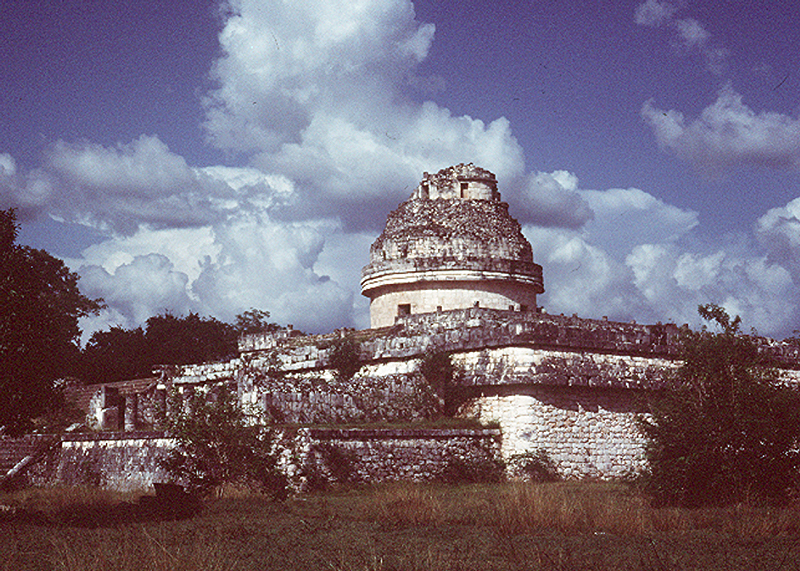Source: WTL© photo.
Notes: Here we see the building called the "snail" (> Span. caracol). It has this name because of a snail-like interior stairway. However, the central round tower, which is 16 meters high, is formed by two concentric galeries, and it has an observation room at the top. In other words, this structure was used as an astronomical observatory. The Mayas created a calendar of 365 days that was more accurate than the calendar used in Europe at the time of Columbus' arrival in the so-called New World. There were no circular buildings in the Mayan world prior to the arrival of the Toltecs ca. 1000. This indicates that Quetzalcóatl or other Toltecs brought this architectural knowledge with them to the Mayan civilization in the eleventh century. This architecture then fused with the Mayas advanced astronomical and mathematical knowledge. |


